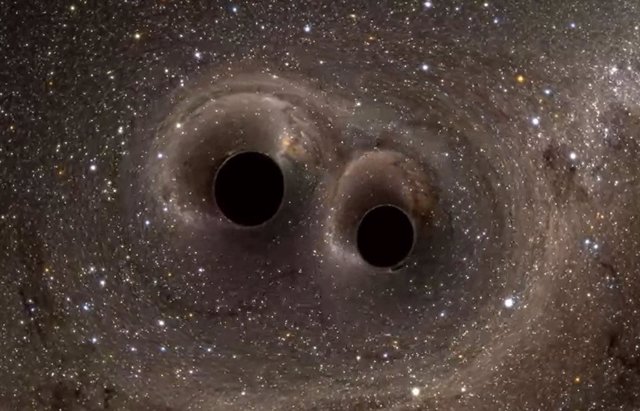15 Feb. () –
The current results to understand how mergers between black holes are processed they depend more on the astrophysical models that are applied than on the available data itself.
In a new study published in the journal Astronomy and Astrophysics Letters, Physicists at the Massachusetts Institute of Technology tested whether the same data would yield the same conclusions by working with slightly different theoretical models of how black holes form.
Clues about the origin of a black hole can be found in the way it spins, especially in the case of binary holes, that is, when two black holes spin together before merging. The spin and tilt of the respective black holes just before merging can reveal whether they arose from a quiet galactic disk or from a more dynamic star cluster.
Astronomers have tried to figure out which of these origins is more likely by analyzing the 69 confirmed binary black holes detected to date. However, the new study concludes that, for now, the current catalog of binaries is insufficient to reveal anything fundamental about how black holes form.
Therefore, the origins of a black hole They can be “spun” in different ways, depending on the model’s assumptions about how the universe works, according to the new research.
“Our work shows that the outcome depends entirely on how the astrophysics is modeled, rather than on the data itself,” he says. it’s a statement Sylvia Biscoveanu, study co-author and NSF (National Science Foundation) Graduate Research Fellow working in the LIGO Laboratory. “When you change the model and make it more flexible or make different assumptions, you get a different answer about how black holes formed in the universe.”
First author Salvatore Vitale says: “We need more data than we thought if we want to make a claim that is independent of the astrophysical assumptions we make.”
“The measurements of the gyres that we have now are very uncertain. But as we accumulate more of them, we will be able to get better information. Then we will be able to say, no matter how detailed my model is, that the data always tells me the same story, a story we could then believe.”









![[Img #74692]](https://thelatestnews.world/wp-content/uploads/2024/12/What-do-11-and-12-year-old-boys-and-girls-300x200.jpg)
